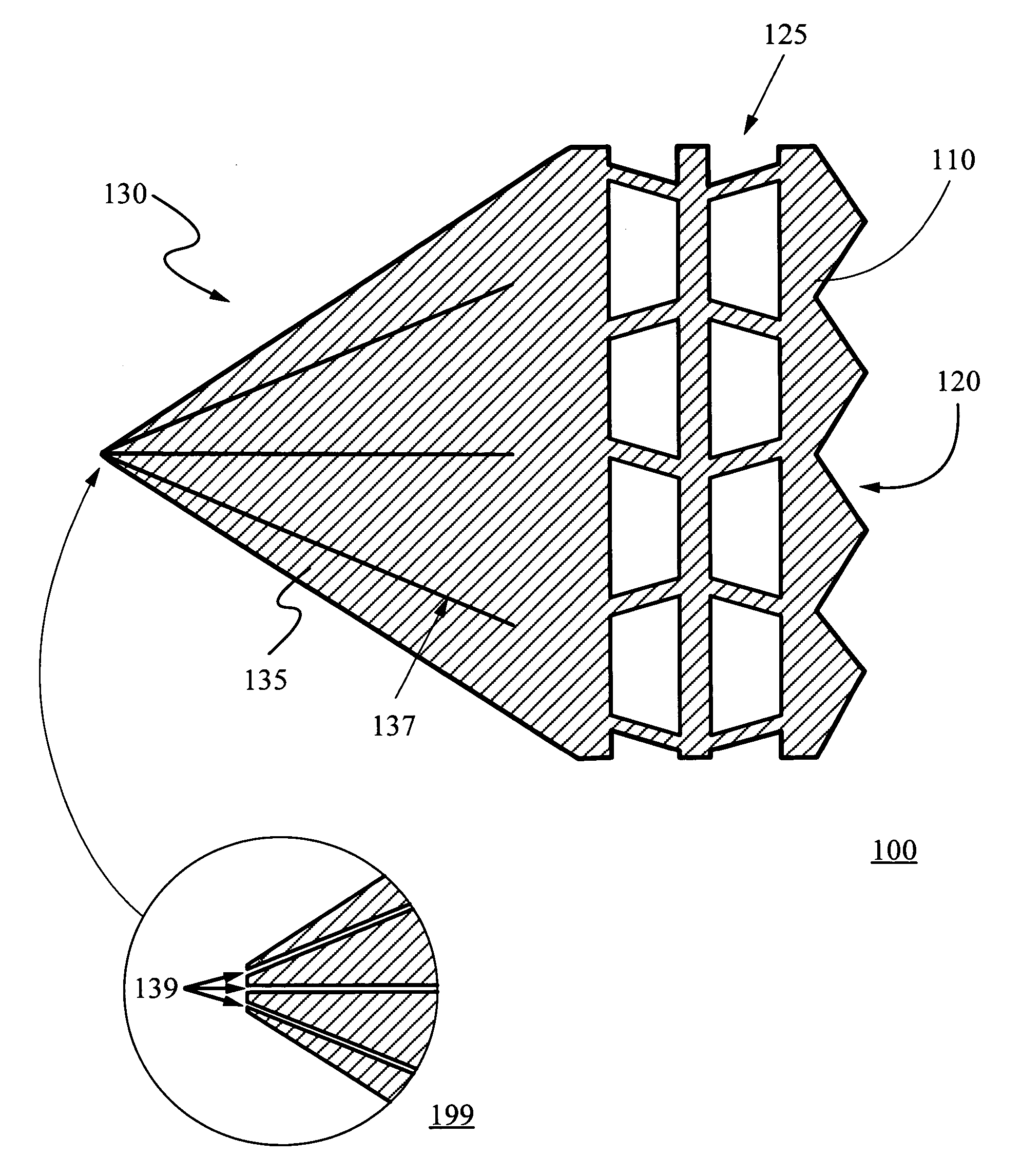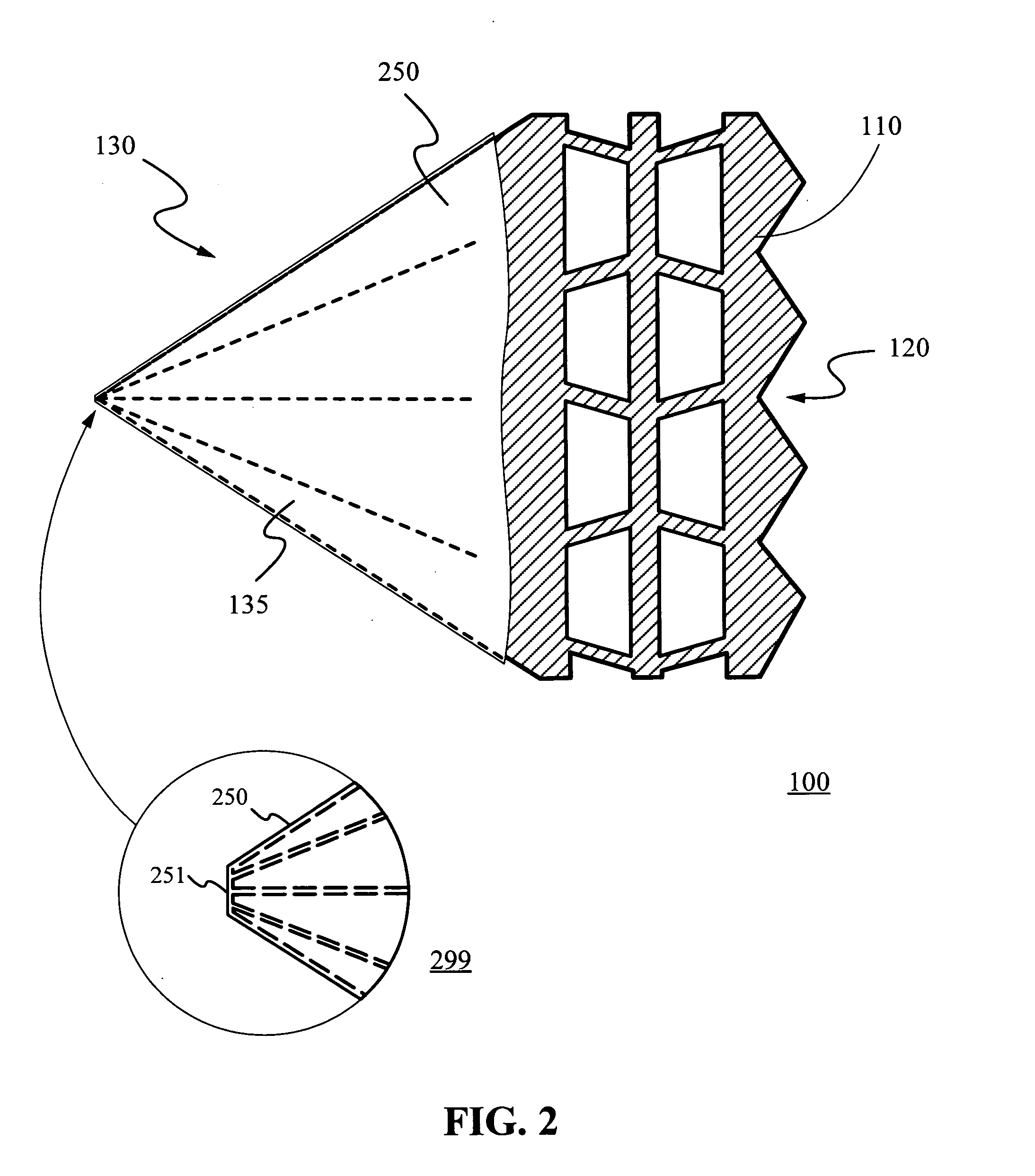Implantable valves and methods of making the same
a technology of implantable valves and valves, applied in the field of valves, can solve the problems of prior artificial valves themselves failing or malfunctioning, failing to function properly or stopping working altogether, non-functioning natural, etc., and achieve the effect of eliminating or significantly reducing the need for complex suturing
- Summary
- Abstract
- Description
- Claims
- Application Information
AI Technical Summary
Benefits of technology
Problems solved by technology
Method used
Image
Examples
first embodiment
[0037]FIGS. 1-2 show an implantable valve 100 composed of a frame structure 110 monolithically formed from a single piece of material and a biocompatible coating 250. According to the present invention, the single piece of material could be metal or a synthetic material made from the polymerization of organic compounds. The frame structure material preferably has memory, for instance, elastic or heat-recoverable shape memory. Shape memory effect describes the process of restoring the original shape of a plastically deformed material by heating it. This is a result of a crystalline phase change known as “thermoelastic martensitic transformation”.
[0038] Materials suitable for implementing the frame structure of the present invention include, but not limited to, nickel-based alloys such as NITINOL (an acronym for Nickel Titanium Naval Ordnance Laboratory), cobalt-chromium-nickel alloys such as Elgiloy®, metallic and plastic shape memory materials, stainless steel, polyether-block co-po...
third embodiment
[0058]FIG. 5 shows the implantable valve and steps of forming the same according to the present invention. As shown in step 501, the implantable valve 500 is formed from a flat frame structure 510, which is stamped with a pattern (omitted here for clarity) and slits forming an opening 539. The dash line 523 illustratively separates the edges, which forms the open end 520 in step 503, from the opening 539, which forms the tapered end.
[0059] The flat frame structure 510 is rolled up or otherwise turned into a conical shape in step 502 by, for example, sliding it over a mandrel (not shown) and heat set in step 503 at a temperature above 300° C. and mostly at 500° C. for a period of one minute to 30 minutes for shape memory alloys.
[0060] One skilled in the art will readily appreciate that different material requires different temperature and time to set and / or cure. For example, Nitinol is a family of inter-metallic materials that contain a nearly equal mixture of nickel (55 wt. % Ni) ...
fourth embodiment
[0062]FIG. 6 shows the implantable valve and steps of forming the same according to the present invention. In step 601, the implantable valve 600 is formed from a substantially flat frame structure 610, which is cut, stamped, laser cut, etched, or molded from a variety of materials, some of which have shape memory and some do not. The frame structure 610 has an intricate pattern 625 with multiple openings including a central opening 639 and a plurality of attachment sites 635.
[0063] As described above, the frame structure material itself could be substantially flat or tubular. In the latter case, it is possible to carve, etch through, or create cavities inside and around the tubular material and then slice the frame structure 610 alone with the pattern 625. Alternatively, it is possible to slice pieces from the tubular material and then stamp, cut, etch, or laser machine the pattern 625 thereof respectively.
[0064] In step 602, the flat frame structure 610 is rolled up or otherwise ...
PUM
 Login to View More
Login to View More Abstract
Description
Claims
Application Information
 Login to View More
Login to View More - R&D
- Intellectual Property
- Life Sciences
- Materials
- Tech Scout
- Unparalleled Data Quality
- Higher Quality Content
- 60% Fewer Hallucinations
Browse by: Latest US Patents, China's latest patents, Technical Efficacy Thesaurus, Application Domain, Technology Topic, Popular Technical Reports.
© 2025 PatSnap. All rights reserved.Legal|Privacy policy|Modern Slavery Act Transparency Statement|Sitemap|About US| Contact US: help@patsnap.com



